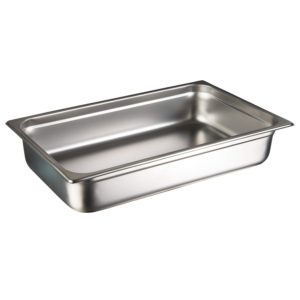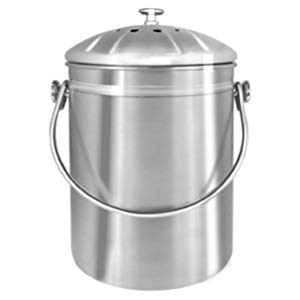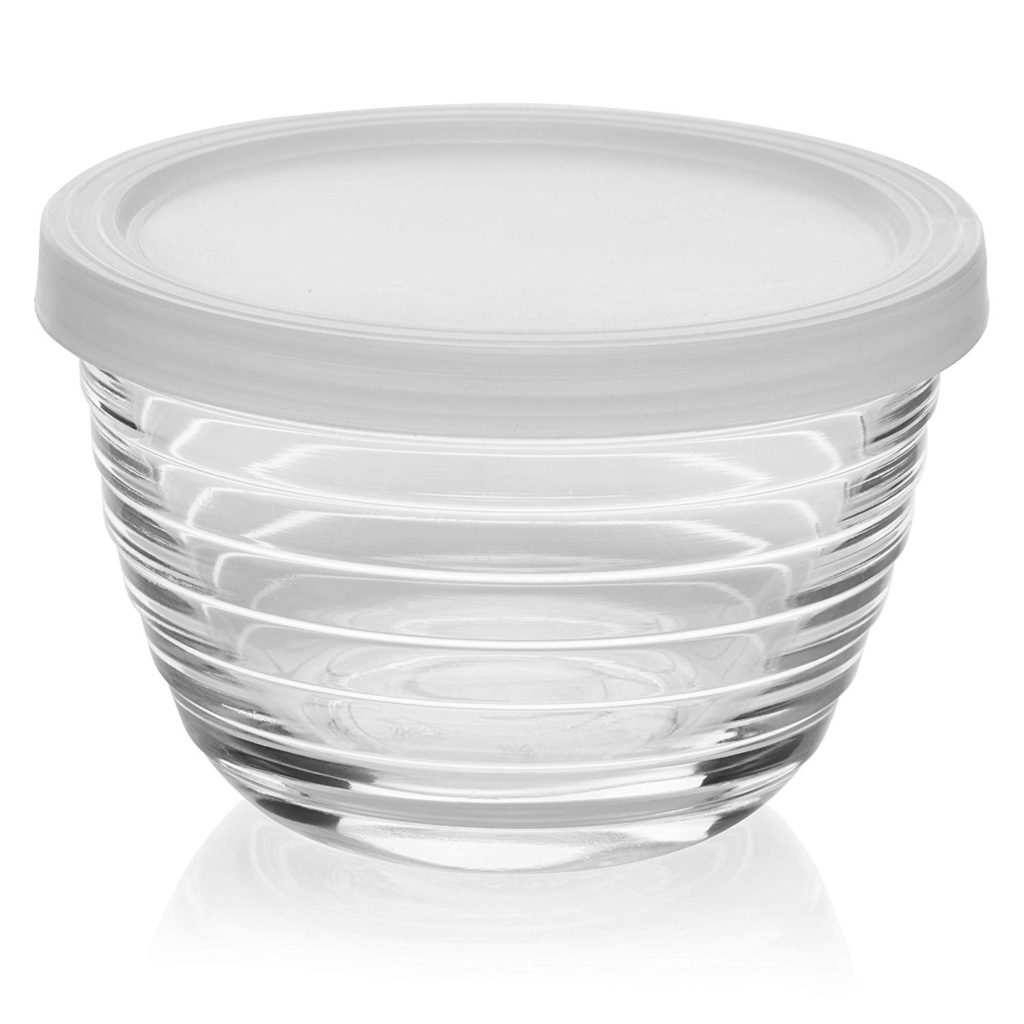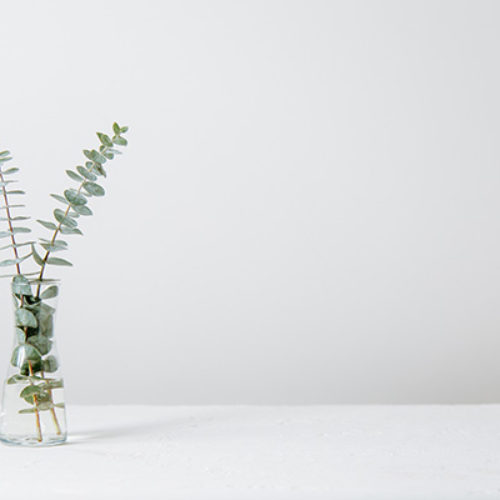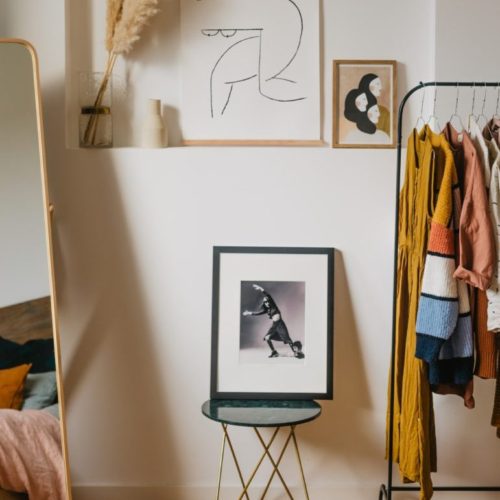Meet Velvet. She’s a former stray turned Santa Monica house cat who loves to cuddle, lay on soft things, and be the queen. Owning a cat and trying to live a more zero waste or sustainable lifestyle can be a challenge, but there are easy ways you can streamline your cat care routine to make it more sustainable.
In general, sustainable cat ownership follows the same principles as sustainable living for humans: minimize single use plastic, choose durable and quality goods that don’t need to be replaced often, and buy in bulk to reduce packaging. Below are the specific tips and tricks I use to create a streamlined and sustainable cat care routine.
Zero Waste Cat Litter
In general, cat litter is probably the trickiest aspect of sustainable cat ownership. Below are the must-have items to create a streamlined and sustainable cat litter routine.
Zero Waste Litter Box
I went through multiple plastic pans before discovering the magic of using a 6″ deep stainless steel hotel pan as a litter box. It makes an amazing plastic-free zero waste cat litter box that’s durable, easy to clean, and doesn’t absorb odors. Plus it’s inexpensive and lasts forever.
Velvet is an indoor cat and not infected with toxoplasma gondii, but I choose not to flush her litter. I live close to the ocean and don’t want to unnecessarily stress our local water systems.
Instead, to keep the cat litter as zero waste as possible, I scoop and store Velvet’s litter into stainless steel compost bucket, which I empty into my larger trash bin outdoors once a week. Originally intended for kitchen compost, this stainless steel bucket makes an amazing zero-waste litter collection pail!
You can keep it inside by the litter box and scoop the litter right into it. There’s a charcoal filter in the lid to control odor, and the bucket can be washed with soap and water.
Another sustainable and budget friendly option is to save and reuse your dry cat food bags to hold litter. Most cat food bags are resealable and coated inside to keep food fresh, which helps control odors.
Stainless Steel Cat Litter Scoop
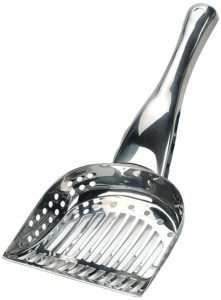
Buying a durable high quality litter scoop has been a total game changer. I bought this stainless steel cat litter scoop from Amazon, and it will probably last forever. It’s makes scooping so much easier and it’s easy to clean.
Sustainable Cat Litter
The number one way to reduce litter waste is to keep the litter box clean, which makes your litter last much longer. Most of the bulk cat litter available in pet stores seems questionable, and I’ve seen them refilling the bins from the same plastic bags you can buy.
Therefore, I just buy my preferred litter in the largest available size bag, and scoop daily. My favorite is Naturally Fresh, which is made from crushed walnut shells and really controls odor. A 26 lb bag lasts about five months for my cat.
Another natural and budget-friendly option is the 40 lb bulk bag of Pine Pellet Stall Bedding. It’s available at feed stores at very low prices, works well, and a single bag lasts a really long time!
Zero Waste Cat Food
Making my own cat food wasn’t practical for me because I don’t have the time or patience, and Velvet is surprisingly picky. If you plan to make your own food, please do your research beforehand to ensure you get the right balance of protein and nutrients. My sustainable compromise is to buy recyclable cans for wet food, supplemented by fresh cooked or raw protein, and to buy dry food in bulk sizes to minimize packaging.
For the cans, I remove the paper label and rinse the cans before dropping in the recycling bin. I feed Velvet about 1/3 of a 5.5 oz can twice a day (with other food in between), storing leftovers in small glass bowls with lids. I mix a few teaspoons of water in with her wet food to create a creamy consistency cats seem to like, and to add more water to her diet.
For dry food, I’ve found a 6 lb pound bag can last almost 5 months for one cat. The best quality dry food I’ve found is Orijen’s grain and filler free dry food. If you have multiple cats, it can be even more economical and sustainable to buy the larger sizes. I empty the bag into three 64 oz Ball Mason jars, store two in a cool cabinet and use the third one for daily feedings. The jars keep the dry food fresh for months at a time and are so convenient.
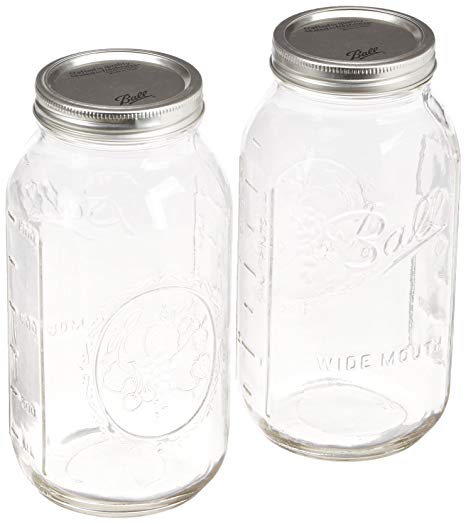
Cat Treats
Cat treats are probably the easiest area to go zero waste! Velvet loves egg yolk, baked chicken, rare steak (unseasoned), tuna (salt free and very occasionally) and small servings of pure pumpkin or sweet potato puree.
Zero Waste Cat Dishes
Thrift stores are excellent places to find inexpensive pet feeding dishes. I like to feed Velvet on small saucers to prevent whisker stress, and found a stack of teacup dishes that are the perfect size from the Goodwill for less than $5! Cats seem to like drinking out of cups, so I use a thrifted coupe glass as Velvet’s water bowl.
Zero Waste Cat Tree
I searched high and low for an sustainable cat tree, and ultimately bought one from Molly and Friends, with zero regrets. Velvet loves her tree and spends quite of bit of time on it, especially the cradle. It’s sturdy, high quality, and extremely durable! Mine has withstood over seven years of daily scratching and still has plenty of life left. The structure is so secure that I might just recarpet it instead of replacing once it’s more worn.
Molly and Friends is definitely more expensive than what you’ll find in the stores, but they’re hand made, constructed with solid pine and thick carpet, and offer excellent long term value.
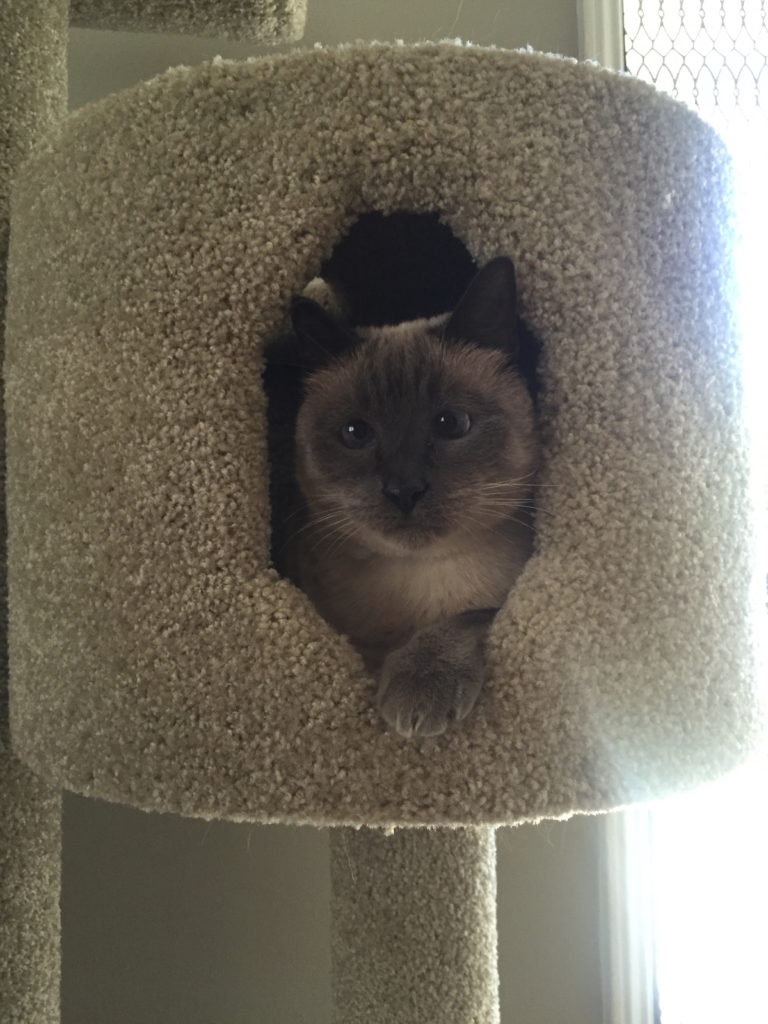
Zero Waste Cat Bed
Skip the commercial cat beds and make your own luxurious zero waste cat bed with a repurposed cardboard box and a soft sweater or blanket. I found a second hand cashmere sweater at a thrift store, tucked it in a shoebox under the bed, and it’s Velvet’s favorite spot. You can also try making this adorable DIY cat tent.
Zero Waste Cat Toys
Most cats seem to end up playing with homemade or random objects, like ribbon, hair-ties or crumpled paper, more than commercial toys. The only toys I recommend purchasing are a refillable catnip object, a laser pointer, and maybe a feather toy.
I have an old Cosmic Banana that’s been mended a few times and lost quite a bit of the original catnip, but still works great. I hope to grow my own catnip this year, and dry the leaves to refill the banana in the future.
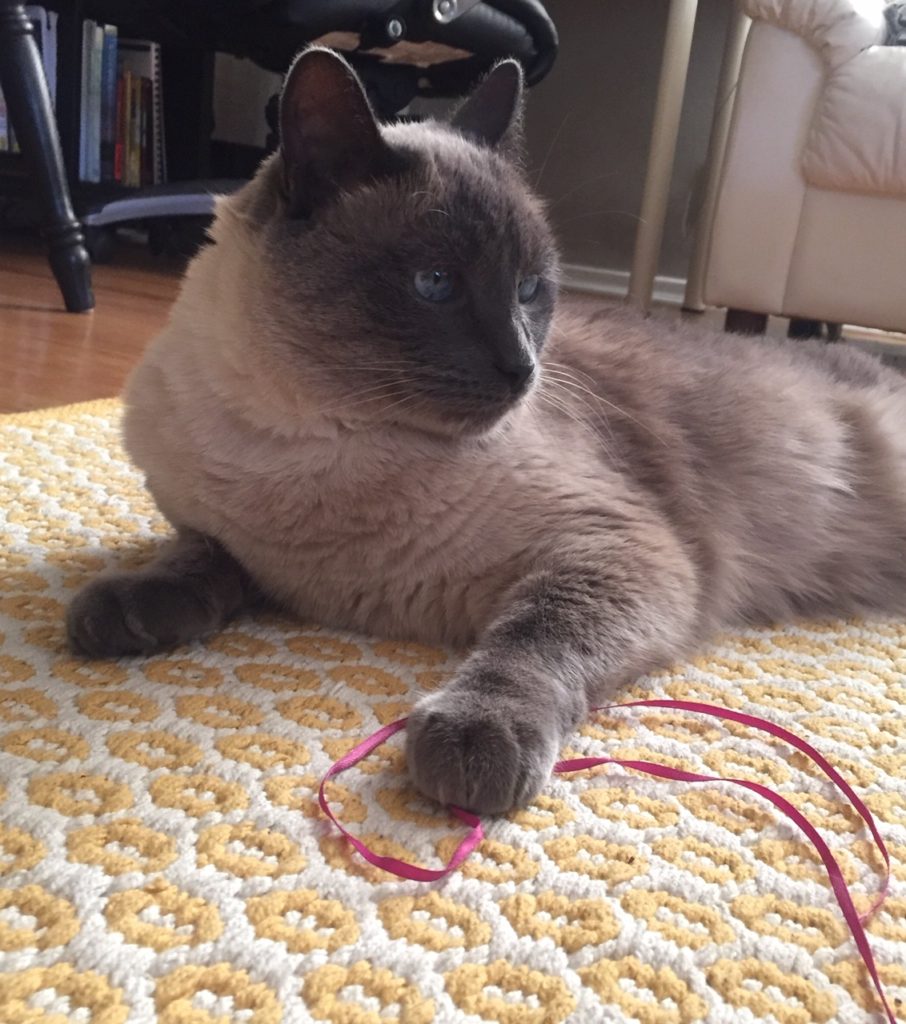
Zero Waste Cat Routine
So there you have it, my complete low waste cat routine. It pretty much comes down to buying larger sizes of everything to minimize packaging, storing food efficiently to prevent waste, using a litter collection system, and choosing durable goods that will last a long time and help reduce waste. I hope you found some of these tips and tricks useful in your own journey to sustainable pet ownership!
Do you have any tricks or tips of your own on how to create a more zero waste cat routine? I’d love to hear them in the comments below!

